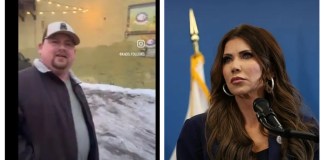The pledge from Japan to invest $550 billion in key U.S. industries could show other countries how to clinch a trade deal with the U.S., even as analysts question how real that money is.
As part of the agreement that set a 15% tariff rate on Japan, the White House said it includes a “Japanese/USA investment vehicle” that will be deployed “at President Trump’s direction” into strategic sectors.
They include energy infrastructure and production, semiconductors, critical minerals, pharmaceuticals, and shipbuilding, according to a fact sheet from the administration. The U.S. would retain 90% of the profits, though the Japanese government believes profits will be split based on “the degree of contribution and risk taken by each party,” according to the Financial Times.
Still, Treasury Secretary Scott Bessent highlighted the fund as a key reason the U.S. and Japan were able to settle on a levy that was lower than the 25% rate Trump had threatened earlier.
“They got the 15% rate because they were willing to provide this innovative financing mechanism,” he told Bloomberg TV on Wednesday, when asked if other countries could get a similar rate.
Indeed, analysts at Bank of America said that the Japan deal “looks like a reasonable blueprint” for other auto-exporting countries like South Korea.
Both countries have similar trade characteristics with the U.S., such as high current account surpluses, high U.S.-bound exports, and less open domestic markets via non-tariff measures, the bank said in a note on Friday.
But Wall Street has serious doubts that the $550 billion will actually materialize. Takahide Kiuchi, executive economist at Nomura Research Institute and a former Bank of Japan policymaker, said in a note Wednesday that the investment pledge is merely a target and not a binding promise.
“In reality, under the Trump administration, many Japanese companies likely view the business environment in the U.S. as deteriorating due to tariffs and other factors,” he explained. “Furthermore, at current exchange rates, labor costs in the U.S. are extremely high, providing little incentive for Japanese firms to expand investment there. If anything, we may see a stronger trend toward diversifying investments away from the U.S.”
Meanwhile, Council on Foreign Relations senior fellow Brad Setser, a former U.S. Trade Representative advisor and Treasury Department official, similarly expressed skepticism about the money.
“Odds are it is vapor ware, beyond the known deals (Alaska LNG),” he posted on X on Wednesday, likening it to a highly touted product that may never become available, “but it would be strange (and would potentially set up future problems) if the US relied almost entirely on other people’s money to fund its own industrial strategies.”
He later added “there is a lot less here than meets the eye,” and pointed out that the industrial sectors highlighted as areas for investment are already logical ones for Japan, given current supply-chain concerns.
A source familiar with the matter acknowledged to Fortune that a lot of details of the $550 billion have yet to be worked ironed out. That includes the timeframe of the investment as well as an advisory board and guardrails against potential conflicts of interest.
But the source added that the investment would be funded by the Japanese government and is not a just pledge from Tokyo to buy commodities or for Japanese companies to steer investments into the U.S.
It also means Japan is fronting the cash to finance projects that are likely to be in the private sector, the source said, offering a hypothetical example of a chip company looking to build a U.S. plant.
Under this scenario, the investment vehicle could finance construction of the factory and lease it out at favorable terms to the chip company, with 90% of the rent revenue going to the U.S. government.
The $550 billion pledge also comes as Trump’s tariffs face legal challenges, with a court hearing scheduled Thursday on whether the president has authority under the International Emergency Economic Powers Act to impose wide-ranging duties.
That could make it attractive for countries to promise a lot of money sometime in the future to obtain immediate tariff relief, while running out the clock as legal battles play out.
Analysts at Piper Sandler have concluded that Trump’s tariffs are illegal and noted that the $550 billion Japanese investment comes with few concrete specifics.
“Our trading partners and major multinationals know Trump’s tariffs are on shaky legal ground,” they wrote. “Therefore, we find it hard to believe many of them are going to make massive investments in the US they would not have otherwise made in response to tariffs that may not last.”
Great Job Jason Ma & the Team @ Fortune | FORTUNE Source link for sharing this story.




